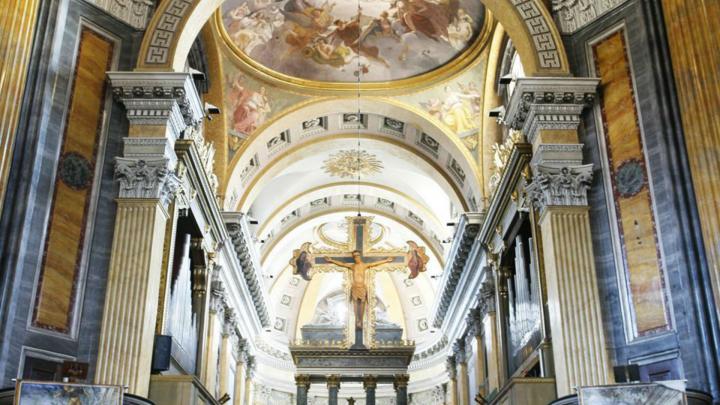The Duomo di Novara was built on the remains of an ancient palaeo-Christian basilica to be intended as a ‘cathedral’ from the times of the first Bishop of Novara, Saint Gaudenzio. From the romanesque basilica, whose construction started during the 12th century, it is still possible to see the bell tower and the precious fragments of a floor mosaic near the main Altar. Around 1745 architect Benedetto Alfieri (1700-1767) planned a complete renovation of the cathedral and, even though this project was never carried out because of lack of funds, it greatly influenced subsequent interventions. Only in the 1830s the church would be restored. The new Altar was consecrated in 1836, having been designed by the Novara architect Alessandro Antonelli. The positive response obtained by the magnificent Altar led to the acceptance of Antonelli’s 1854 project for the restoration of the whole cathedral. From this project, defined as colossal and architectonically complex, the southern arcade, the transept, the dome and the presbytery. The vaulted nave and the two side aisles are enriched by side Altars, by the main Altar by Antonelli, by Melchioni’s presbytery and by the large Medieval Crucifix in gilded wood placed on the Altar. Two symmetrical ambos link the nave and the presbytery.
You are here
CATTEDRALE DI SANTA MARIA ASSUNTA
Address
Piazza Repubblica
28100 Novara NO
Italy
